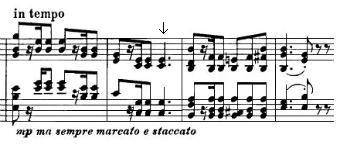Playing for me in a recent masterclass, a pianist performed Liszt’s etude “Wild Hunt.” At the end of two measures of melody (m. 60), he raised his wrists immediately after playing the last note in the bar, releasing his fingers from the keys — although the notated duration of this sound is the longest in the line.

The piano is a device that never came with a set of instructions. In a sense, musicians are always making how-to guides. And there are a lot of ways to play the piano. The instrument is a tool, a means of making sounds, a machine used for communicating in music.
It’s often confusing to encounter a keyboardist whose physical playing is contrary to our own, and yet hear that the musical results may be plausible.
There’s a lot of speculation — even inspired speculation — about piano playing. A few researchers have tried to find out more, about how piano tone is produced, or a piece committed to memory. When it comes to physical piano playing, we still know quite little. Ideas from sports medicine and the new area of performing arts medicine have made fairly small impact. In music, a lot of teaching is based on received opinion.
There’s a long heritage of piano teachers who had strong impact: Franz Liszt, Tobias Matthay, Theodor Leschetizky, Anton and Nicholas Rubinstein, Heinrich Neuhaus, Rosina Lhevinne, Isabelle Vengerova…
Today, there are quite a few well-known teachers who worked with Dorothy Taubman and who use her ideas about avoiding physical tension and injury. It can’t be desirable to play with excessive physical tension.
But on the question of whether the wrist comes up or stays down, I prefer to consider the musical phrase. I do release the wrist (slightly upwards) at the end of every slur, or phrasing tie. Pianists tend to be less aware of long notes than other musicians. Keeping the wrist down through a long note is one small way that linear connection and overlapping phrase designs can be attended to, experienced, and heard.
